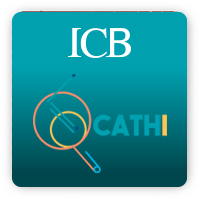Is Chickpea a Potential Substitute for Soybean? Phenolic Bioactives and Potential Health Benefits
Legume seeds are rich sources of protein, fiber, and minerals. In addition, their phenolic compounds as secondary metabolites render health benefits beyond basic nutrition. Lowering apolipoprotein B secretion from HepG2 cells and decreasing the level of low-density lipoprotein (LDL)-cholesterol o...
Saved in:
| 主要作者: | |
|---|---|
| 其他作者: | , , , , , , , , |
| 格式: | Artículo |
| 语言: | en_US |
| 出版: |
2019
|
| 主题: | |
| 在线阅读: | https://doi.org/10.3390/ijms20112644 https://www.mdpi.com/1422-0067/20/11/2644 |
| 标签: |
添加标签
没有标签, 成为第一个标记此记录!
|
| 总结: | Legume seeds are rich sources of protein, fiber, and minerals. In addition, their
phenolic compounds as secondary metabolites render health benefits beyond basic nutrition.
Lowering apolipoprotein B secretion from HepG2 cells and decreasing the level of low-density
lipoprotein (LDL)-cholesterol oxidation are mechanisms related to the prevention of cardiovascular
diseases (CVD). Likewise, low-level chronic inflammation and related disorders of the immune system
are clinical predictors of cardiovascular pathology. Furthermore, DNA-damage signaling and repair
are crucial pathways to the etiology of human cancers. AlongCVDand cancer, the prevalence of obesity
and diabetes is constantly increasing. Screening the ability of polyphenols in inactivating digestive
enzymes is a good option in pre-clinical studies. In addition, in vivo studies support the role of
polyphenols in the prevention and/or management of diabetes and obesity. Soybean, a well-recognized
source of phenolic isoflavones, exerts health benefits by decreasing oxidative stress and inflammation
related to the above-mentioned chronic ailments. Similar to soybeans, chickpeas are good sources of
nutrients and phenolic compounds, especially isoflavones. This review summarizes the potential
of chickpea as a substitute for soybean in terms of health beneficial outcomes. Therefore, this
contribution may guide the industry in manufacturing functional foods and/or ingredients by using
an undervalued feedstock. |
|---|
